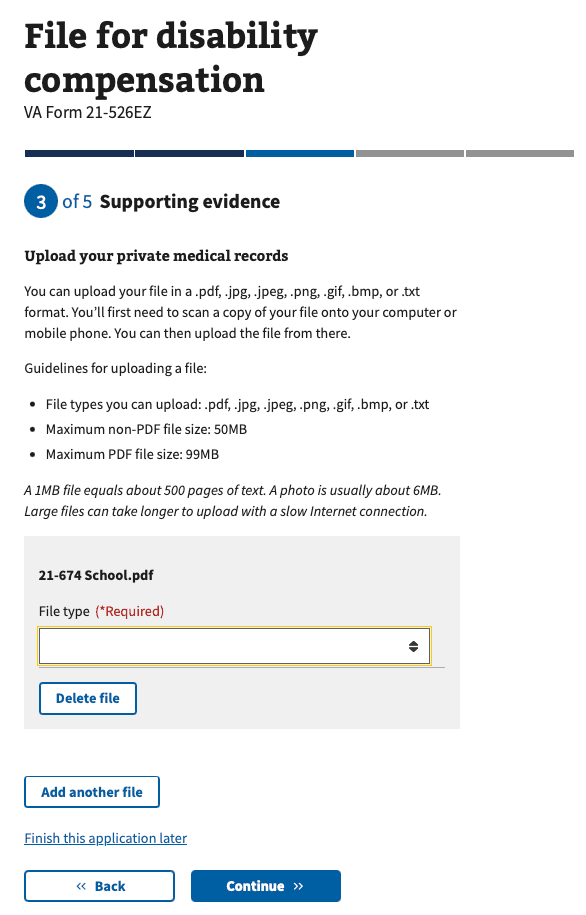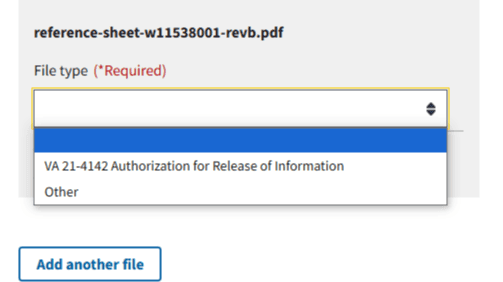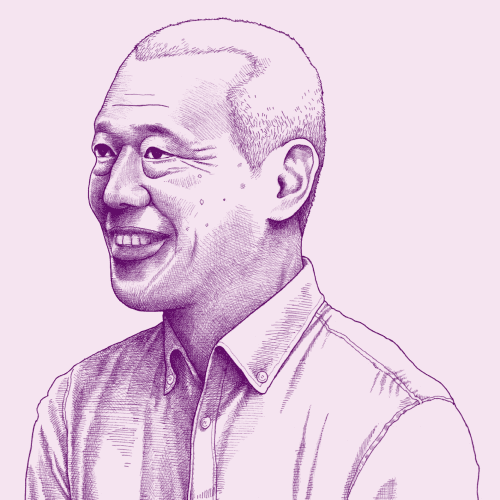Impact stats:
Nearly 7x the number of Veterans who can give their documents more meaningful labels
Roughly 9 weeks to implement a quick fix that helps Veterans
Summary
Disability benefits are a critical lifeline that connect many Veterans to life-saving care and compensation. However, some Veterans seeking disability benefits can get stuck in a waiting pattern. Given the outsize impacts of this program, the U.S. Department of Veterans Affairs (VA) is prioritizing ways to make the disability benefit application process more efficient.
VA partnered with Nava to conduct targeted research on ways to improve the disability application process on VA.gov. Our shared research helped us quickly find a specific step of the application where Veterans were getting confused: labeling uploaded documents on VA.gov to support disability claims. Some Veterans incorrectly label their documents, resulting in increased work for claims processors and issues for VA’s automated processes.
By interviewing claims processors and practicing iterative design practices, we were able to help VA implement a quick and simple solution. Now, Veterans are more likely to understand how to label their documents, helping reduce administrative burden for claims processors and speed up claims decisions for Veterans.

A screenshot of where Veterans label their documents on VA.gov.
Approach
We began this work by interviewing claims processors to identify ways to improve the disability application process. Based on our research, and with the help of claims processors, we identified one document uploader screen as an area to explore for improvement. We chose to focus on this screen because it’s where the majority of issues were occurring.
Next, we analyzed data on how many Veterans were labeling their documents “Other,” which was causing issues for claims processors and automation. By taking a razor-sharp approach to our research, we were able to quickly identify tweaks to the document uploader screen that would have the most impact.
Outcomes
In just nine weeks, we helped VA implement a new document uploader screen that’s easy for Veterans to use and provides claims processors with the information they need. With the new document uploader screen, 34% of Veterans labeled their documents “Other,” compared to 90% with the legacy system. Not only does this improve user experiences for Veterans, thus building trust in VA and its systems, but it also makes it easier for claims processors to quickly and correctly process claims. Finally, the new document uploader screen helps streamline VA’s automated processes — an essential piece of claims adjudication.
Process
Our first step was to conduct research with VA claims processors to identify areas for improvement in the disability application process. Claims processors shared that accurate document labels help them quickly locate important documents in a Veteran’s file. Document labels also enable VA’s automated processes to help decide which documents to include in automated claims reviews.
Veterans upload supporting documents on three screens across VA.gov. To label their documents, they’re met with a dropdown menu that contains pre-defined labels, such as “Photographs” and “Marriage Certificate.” Many Veterans were getting tripped up at this step — on some screens, the number of menu choices was overwhelming; on others, relevant options were missing. And on others still, the language in the menu choices was confusing.
With support from VA, we decided to focus on the screen where Veterans upload private medical records, because that’s where the majority of issues were occurring. On this particular screen, Veterans only saw the options “Authorization for Release of Information” and “Other.” Naturally, most Veterans were selecting “Other.”

A screenshot of the legacy private medical records uploader screen.
This posed a problem for claims processors. When Veterans labeled their documents “Other,” claims processors had to click into each document in the back end to find more information, even if that particular document wasn’t related to the task at hand. This manual process also increased the risk that claims processors might miss important documents.
Further, “Other” is not a helpful label for VA’s automated processes. A mislabeled document can result in the system ordering unnecessary exams, delaying a claims decision, or even missing important documents that Veterans upload. All of this can cost government money and prolong claims decisions, which can reduce trust in VA’s claim processing system.
With our partners at VA, we hypothesized that improving the options on the document uploader dropdown menu would reduce the number of Veterans incorrectly selecting “Other.” We added two options that fit many documents uploaded by Veterans: “Disability Benefits Questionnaire (DBQ)” and “Medical Treatment Record - Non-Government Facility.”

A screenshot of the revised private medical records uploader screen.
After launching the new uploader screen, we analyzed data on how many Veterans were selecting “Other.” The data showed drastic reductions in the number of Veterans selecting “Other,” suggesting that the new uploader screen was more user-friendly than the legacy form.
However, there is still room to improve. Going forward, we’ll help VA research why 34% of Veterans are still selecting “Other.” We’ll also work with VA to explore ways to improve the user interface on all three screens where Veterans upload documents. This might include reducing menu options, re-writing terminology in plainer language, organizing menu options in a more user-friendly way, and offering guidance on how to select the correct document label.
Finally, we’re helping VA explore how artificial intelligence (AI) might improve this process. Together, we plan to test AI-enabled solutions that can automatically match a document to the correct label, taking the onus off of Veterans. Veterans can then confirm whether the solution’s output is correct.
Conclusion
Disability benefits are a lifeline for millions of Veterans every year, so it's crucial for the end-to-end disability benefit application process to be quick and easy. With VA, we conducted targeted research that enabled us to address a specific problem in the disability benefits application process, streamlining one step of this process. Going forward, we’ll help VA implement this solution on other document uploader pages, and we’ll build on this success by helping VA make other improvements to the disability application. By making the disability benefit process more user-friendly, VA is increasing trust in its systems while ensuring timely adjudication of claims.
Written by

Principal designer and researcher

Senior designer/researcher

Senior Editorial manager
